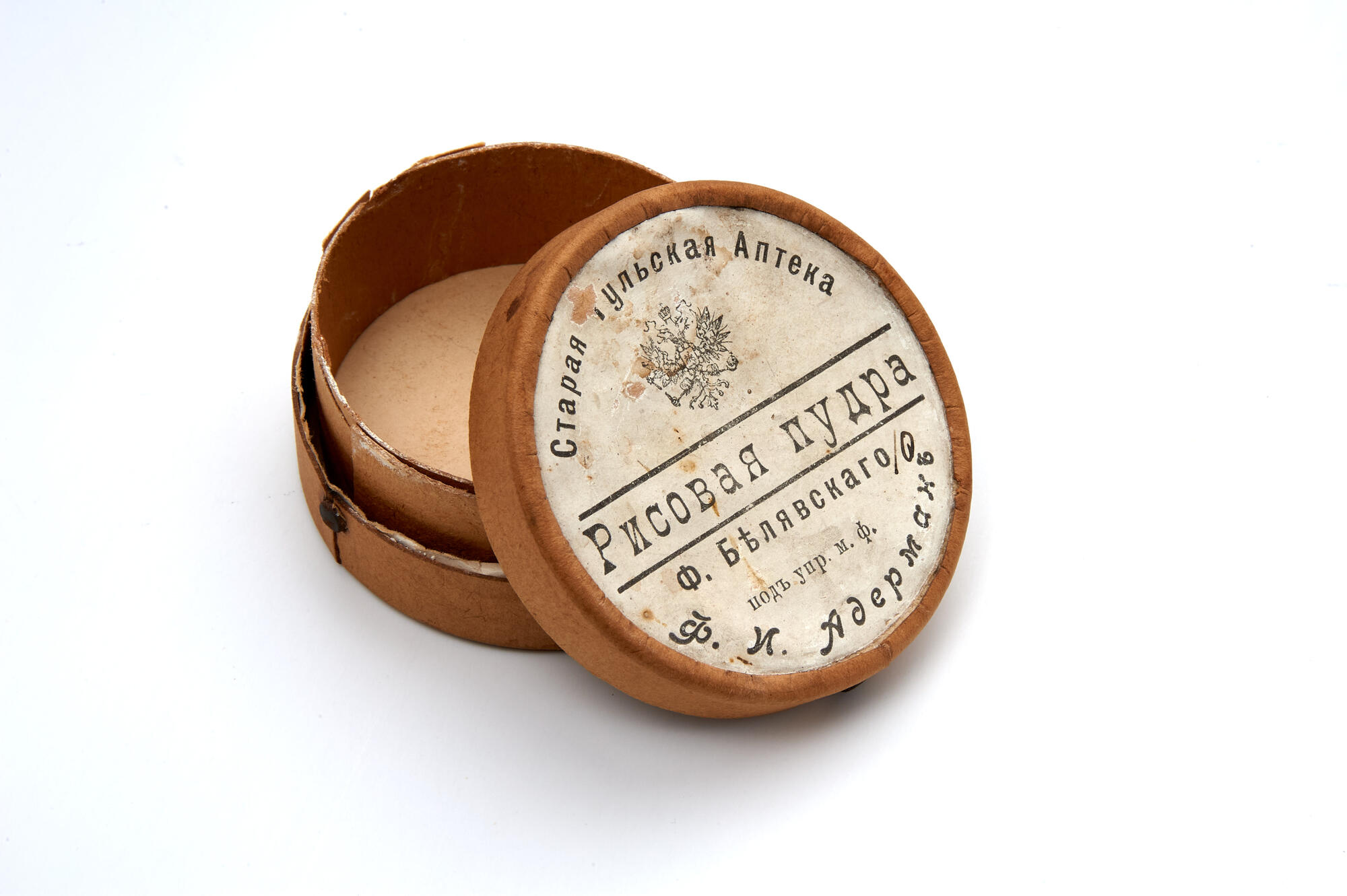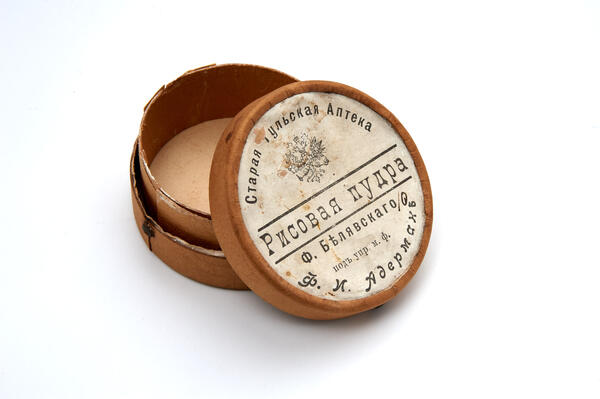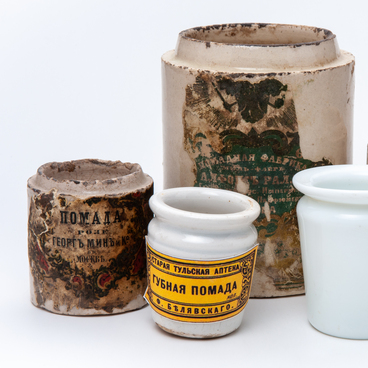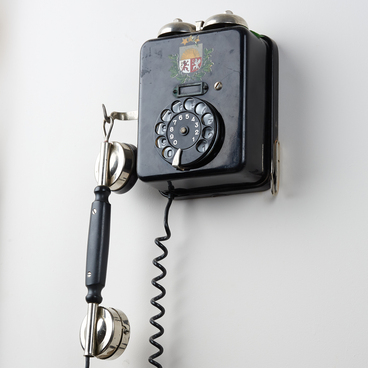Among the exhibits of the ‘Old Tula Pharmacy’ is the round powder box. It is made of cardboard, and it is closed on the side with a metal clasp.
Since ancient times, women have used various means as cosmetics. To whiten the skin, some preferred clay, others — white lead, and others used ground crocodile droppings as a powder. It is believed that rice powder was invented in ancient China: there, rice grains were ground into flour. In European countries, the powder was also made of wheat, sometimes lead was added.
In the 17th century, not only the face was powdered, but also the hair. Under Louis XIII, wigs made of women’s hair became fashionable. Most of all, blond curls were valued. Under the King’s decree, only representatives of the ruling dynasty could wear blond wigs. Then the courtiers with dark hair began to sprinkle them with light- colored powder. Peter the First brought the fashion for wigs and powder to Russia. Following the aristocrats, merchant wives began to lighten their hair, and soon soldiers in the army were forced to wear such secular hairdos. After the overthrow of the French monarchy in 1792, powdered wigs went out of fashion.
British Queen Victoria declared cosmetics vulgar. Naturalness and a healthy complexion have become fashionable for a short time. Cosmetic powder again gained popularity at the beginning of the 20th century thanks to actresses Sarah Bernhardt and Eleanor Duse. This was also when a cosmetic revolution took place: now powder was made of talc on an industrial scale. It did not stick together into a crust, did not cause skin irritation, and was easily mixed with various dyes and fragrances. And soon lead and other harmful substances completely disappeared from the powder; they were replaced with safe zinc oxide.
The preparation of powder is a cheap and technologically simple process, so it was often produced directly at the pharmacy. Pharmacy powder of the highest grade was made of rice or potato starch and magnesia alba. The cheaper version contained kaolin and wheat starch. For the fragrance, essential oils or a drop of fashionable perfume were always added to the finished powder.
In 1923, the English company Laughton & Sons began to produce convenient compact powder boxes with a sponge. And in the 1950s, the Hollywood make-up artist Max Factor created an everyday version of his foundation powder that was accessible to all women — not only for movie actresses — which effectively hid skin imperfections. Because of the flat box, it was called Pan Cake. Helena Rubinstein was one of the first to produce inexpensive powder, and in the early 1940s, Elizabeth Arden launched mass production. The cosmetic product is still popular today: according to statistics, the inhabitants of the planet use up to 700 thousand tons of powder a year.



